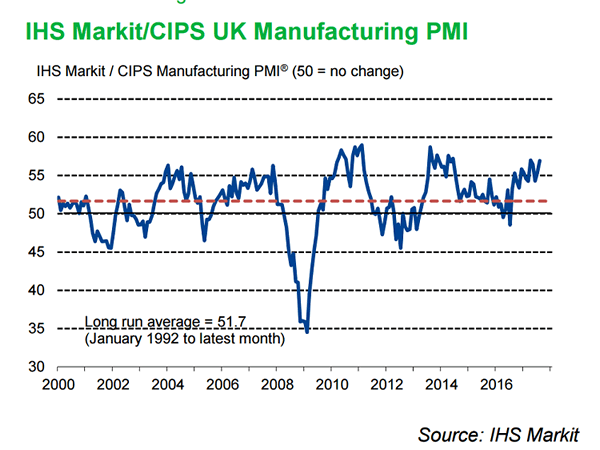After defying all the Brexit doom-mongers in the initial aftermath of the shock referendum result, the British economy appears to be succumbing to the uncertainty, with GDP in the first half of the year growing at its slowest in five years. Talks between Britain and the European Union have not gotten to a very good start, with little progress made on key issues after three rounds of negotiations.
The uncertain future of the UK’s relationship with its European partners is weighing not just on business spending plans but is also hitting companies’ ability to find available and skilled workers. Many EU citizens residing in the UK are leaving the country, while others are becoming less reluctant to move there. However, wages have yet to see significant upside pressure from the staff shortages. Combined with the surge in import prices as a result of the pound’s tumble after the Brexit vote, UK consumers are feeling the pinch as living costs rise faster than household income.
The fall in people’s disposable income is a serious risk to Britain’s consumer led economy, where consumption accounts for about two thirds of GDP. There was further evidence of this today from the Markit/CIPS services PMI. The index fell from 53.8 to 53.2 in August, missing expectations of 53.5. This was the weakest reading since September 2016. Respondents to the survey said fragile business confidence and the uncertain outlook for the economy impacted on business decision making, while rising input costs added pressure on firms to raise prices. However, despite the deteriorating outlook, many firms reported a rising backlog of work and sought to raise capacity by hiring more people, pushing the employment index to a 19-month high.

In the manufacturing sector, the tide may finally be turning for UK exporters. Markit/CIP’s latest manufacturing survey showed the PMI rising to a four-month high of 56.9 in August from an upwardly revised 55.3 in July, beating forecasts 55.0. Output was driven by stronger domestic as well as overseas demand and employment grew at its fastest since June 2014.
In a further sign that the weaker pound is finally boosting exports, the manufacturers’ trade association, EEF, reported strong increases in output and orders in its latest quarterly survey today. The output balance rose to +34% in the third quarter from +26% in the prior quarter. The balance for export orders jumped to +33% and total orders hit a historic high of +37%.

Reaction to the above data has been limited in forex markets, with Brexit concerns and moves in other currencies being a bigger driver for sterling in recent days. The pound has been ranging in the $1.28-$1.30 region for the past week, while against the euro, it remains close to last week’s 10½-month low of 0.9306 per euro.
It remains to be seen if the rebound in manufacturing activity will be sustainable and whether this will be enough to offset the slowdown in consumer spending. Progress in the Brexit negotiations will be crucial in assuring businesses that the UK is not headed for a cliff-edge exit when its withdrawal from the EU takes effect in March 2019. Prolonged uncertainty can only be negative for the pound and would further weigh on the economy’s longer-term prospects.













